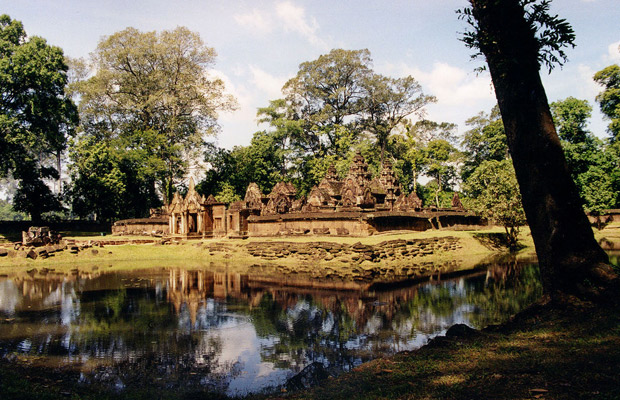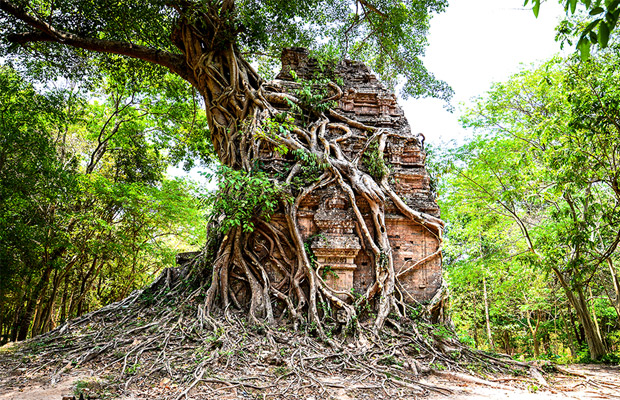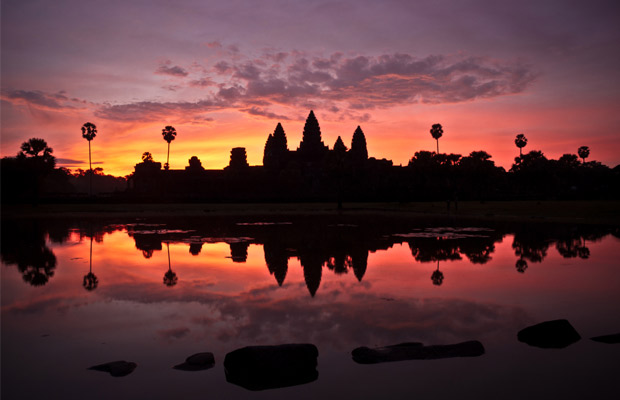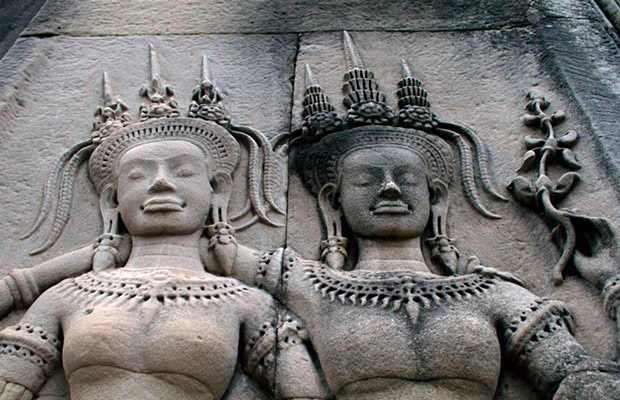Banteay Srei Tours
The tenth-century temple of Banteay Srei is known for its intricate decoration carved in pinkish sandstone that covers the walls like tapestries. This site guarantees all the time that your schedule allows.
The tenth-century temple of Banteay Srei is known for its intricate decoration carved in pinkish sandstone that covers the walls like tapestries. This site guarantees all the time that your schedule allows.
The roads have been recently repaired and it takes about 30 minutes from Siem Reap to reach the temple. To reach Banteay Srei, follow the main road in the north of Siem Reap, turn right into Angkor Wat and follow the road to Srah Srang, where you turn right after Pre Rup.
At East Mebon there is a checkpoint where you need to get Clearnce. Turn right again on the road before East Mebon; cross the village of Phoum Pradak where there are junctions (if you continue straight ahead, after about 5 minutes, you will reach Banteay Samre). At this point, you reached a fork; take the road on the left and follow it to Batneay Srei, which you will reach shortly after crossing two rivers - on the left side.
Banteay Srei is an exquisite miniature; a fairy palace in the heart of an immense and mysterious forest; The only thing Grimm was delighted to imagine, and what every child's heart has wanted, but what mature years, unfortunately, have proved too adorable to be true. And here it is, in the Cambodian forest of Banteay Srei, did not hide the things that the dreams are made, but of solid sandstone.
Banteay Srei Background
The enchanting temple of Banteay Srei is the favorite of almost everyone. The special charm of this temple is in its remarkable state of preservation, small size and excellence of decoration.
The unanimous opinion among French archaeologists who worked in Angkor is that Banteay Srei is a "precious jewel" and a "jewel in Khmer art". Banteay Srei, as it is known by locals, was originally called Isvarapura, according to inscriptions. It was by a Brahmin of royal descent who was a spiritual teacher of Jayavarman V. Some describe that he is being closer in architecture and decoration to Indian models than any other temple in Angkor. A special feature of the exquisite decoration was the use of a hard pink sandstone (quartz sandstone) where it enabled the "sandal carving technique with even an Indian scent".
Location: 25 km (15.5 miles) northeast of East Mebon
Access: enter and exit the temple through the east entrance
Date: second half of the 10th century (967)
King: Rajendravarman II (reign 944-968) and Jayavarman V (reign 968-1001)
Religion: Hindu (dedicated to Shiva)
Art style: Banteay Srei
Materials and style
Banteay Srei is constructed largely of a hard red sandstone that can be carved like wood. The brick and laterite were used only for walls of the casing and some structural elements. The temple is known for the beauty of its lintels and pieces of sandstone.
A pediment is the approximately triangular space above an entrance or rectangular openings. In Banteay Srei, the gables are relatively large compared to the openings below, and take on a sweeping shape. For the first time in the history of Khmer architecture, entire scenes of mythological subject are portrayed in the pediments.
A lintel is a horizontal beam that spans the space between two posts. Some lintels serve a structural purpose, serving to support the weight of the superstructure, while others are purely decorative in purpose. The lintels at Banteay Srei are beautifully carved, rivaling the 9th century Preah Ko style with quality.
Many niches on the walls of the temple contain carvings of devatas or dvarapalas.
Notable decorative motifs include the kala (a symbolic toothy time monster), the guardian dvarapala (an armed temple guard) and devata (demi-goddess), the false gate and the colony. [16] In fact, decorative sculptures seem to cover almost all available surfaces. According to the pioneering scholar of Angkor Maurice Glaize, "Given the very particular charm of Banteay Srei - his remarkable state of preservation and the excellence of an almost perfect ornamental technique - one should not hesitate, of all the monuments of the Angkor group, to give the highest priority. " In Banteay Srei, Glaize wrote, "the work relates more to the art of the silversmith or to carving in wood than to carving in stone"
View Mores Temple Guide
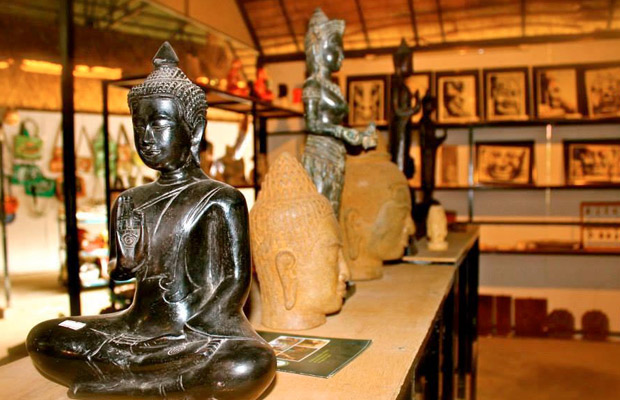
Angkor Handicraft 1
Angkor Craft 1 How to go: 1.5 km (5mn) from the provincial city. Location: Description: Location: Stoeng Village Thmey, Sung Dongkom Commune, District ...

Terrace of the Elephants
The Elephant Terrace (Khmer: ព្រះ លានជល់ដំរី) is part of the walled city of Angkor Thom, a ruined temple complex in Cambodia. The terrace was used by Angkor King, ...
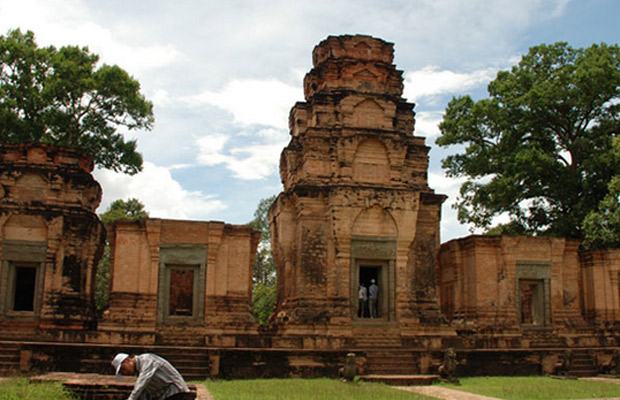
Prey Monty Temple
Transition between Kompong Preah (eighth century AD 706, 800) and Kulen style (first half of the ninth century AD 802-850). CONTENTS Contains a group of 3 brick towers and lay side by side on a low ...

Neak Pean Temple
Neak Pean (or Neak Poan) [2] (Khmer: ប្រាសាទនាគព័ន្ធ) ("The intertwined serpents") in Angkor, Cambodia is an artificial island with a Buddhist temple on a circular ...
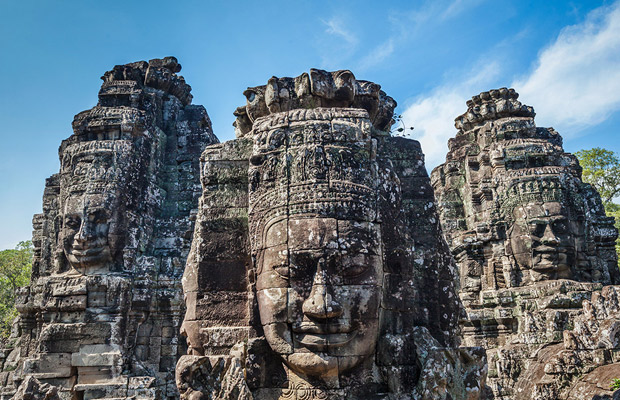
Bayon Temple Trips
Bayon (Prasat Bayon) is a well-known and richly decorated Khmer temple in Angkor, Cambodia. Built in the late 12th or early 13th century as the official temple of King Mahjimana Buddhist Jayavarman ...
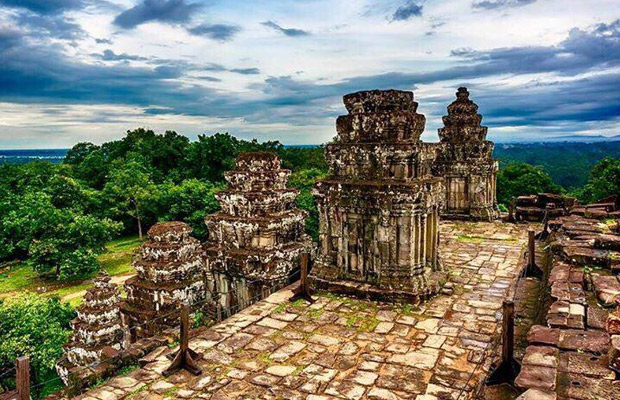
Phnom Bakheng
Phnom Bakheng in Angkor, Cambodia, is a Hindu and Buddhist temple in the shape of a temple mountain. Dedicated to Shiva, it was built at the end of the 9th century, during the reign of King ...

Khmer Classical Dancing
The Grande Hotel in Angkor has a restaurant and stage by the river that features nightly performances of apsara style dancers. The show and dinner buffet is $ ...

Prasat Wat Athvea
Wat Althea, also called Prasat Vat Althea, is a 12th century Hindu temple in Angkor, Cambodia, with an active Buddhist temple and burial ground, located next to the ancient walled structure. It is ...

Wat Tang Tok
Wat Tang Tok is a small monastery inside Angkor Thom, not far from Victory Gate, north of Vihear Prampil Loveng. During an Angkorian era, Wat Tang Tok housed a laterite shrine with sandstone ...
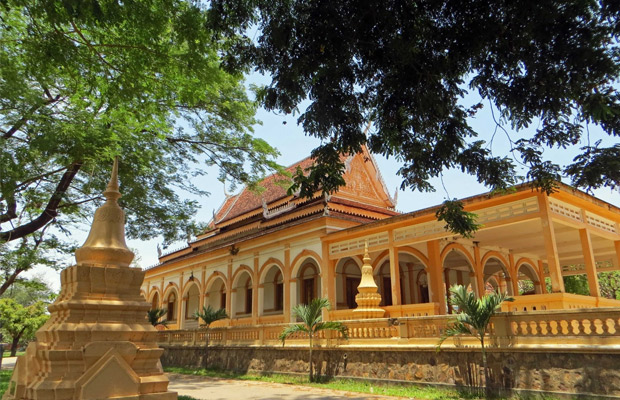
Wat Damnak
Wat Damnak is located near Phsar Chas aka Old Market, just opposite the Siem Reap River. If you were to stroll the Old Market, you would see the stone bridge directly in its southeast corner. Stroll ...

West Baray
The West Baray (Khmer: បារាយណ៍ទឹកថ្លា, Baray Teuk Thla) is a baron or reservoir, in Angkor, Cambodia, oriented to the east and west, located west of the walled city, ...

Angkor Thom South Gate
The south gate of Angkor Thom is more popular with visitors as it has been fully restored and many of the heads (mostly copies) remain in place. The gate is on the main road to Angkor Thom from ...



